
The City has installed cycling infrastructure near the York University Keele Campus and in the Downsview Neighbourhood, which provides connections to Downsview Park, the Black Creek Ravine system and major transit stops and stations on TTC Line 1 and the future Finch LRT. In June 2018, Toronto City Council approved the installation of the proposed cycling routes for the York University and Downsview Cycling Connections project. Installation began in August 2018 and was completed in 2023. Please refer to the tabs below for the latest information.
Between July 2021 and April 2022, the City of Toronto constructed new multi-use pathways and dedicated bikeways in the York University area.
For more information, please see the project design and construction notice below:
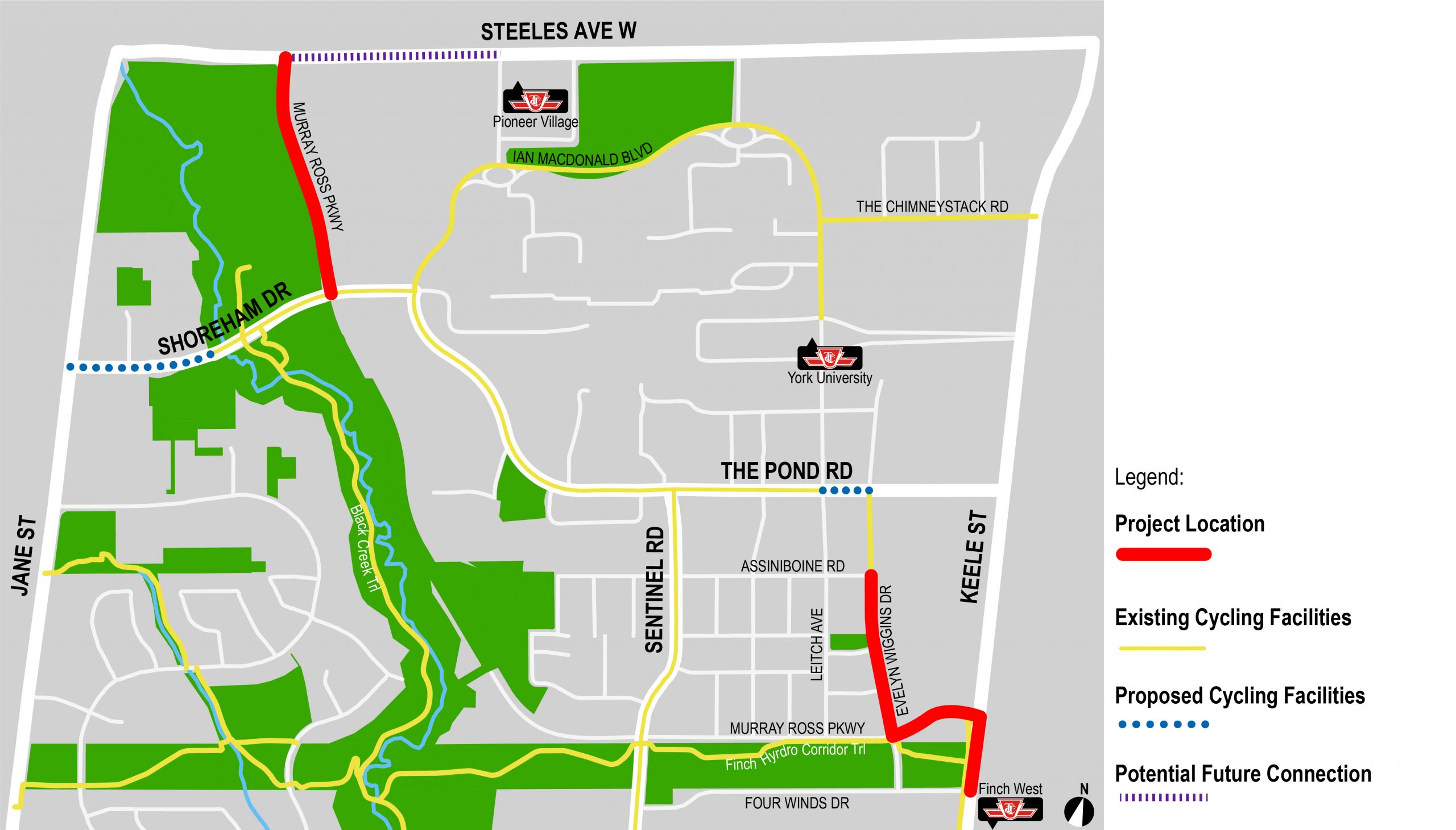
Between September 2021 and May 2022, the City of Toronto constructed sidewalks, bike lanes, and multi-use trails in the Downsview area.
For more information, please see the construction notice below:
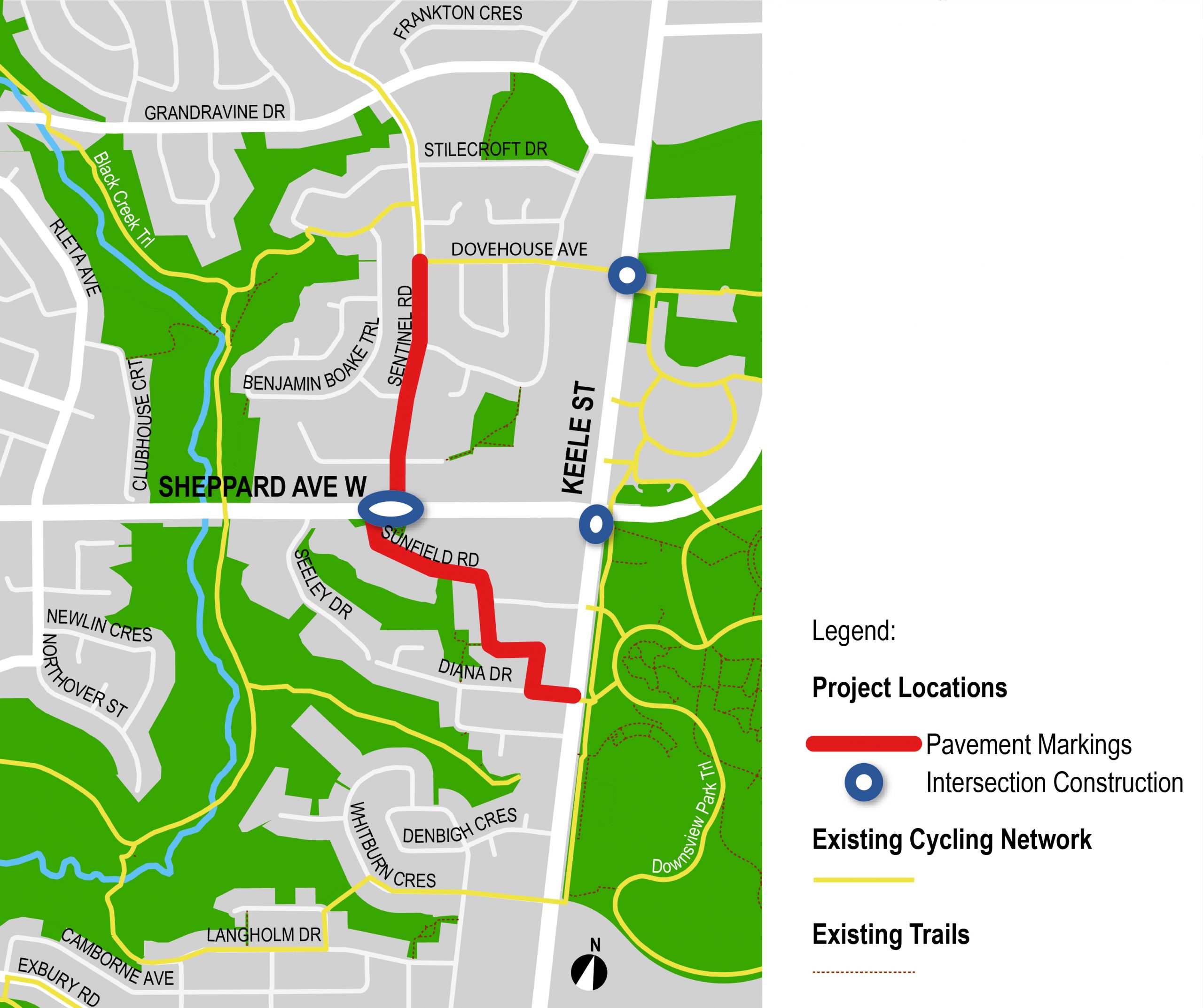
The City’s Council-approved Cycling Network Ten-Year Plan identifies existing, planned, and proposed cycling facilities across Toronto. The City installed a number of new cycling routes in both neighbourhoods, including bike lanes, sharrows, and boulevard trails.
The City hosted three public drop-in events for this project in Winter 2018. You can find more information in the public consultation report below:
Some trees will be impacted to accommodate the road safety changes. Some trees will require replanted due to limiting conditions (e.g. hydro lines above) or removed to accommodate the proposed changes. Additional trees would be planted to result in a net increase of trees in the area, compared to the 151 trees today.
Proposed changes to trees on Sentinel Road:
| Preserved | 115-120 |
| Removed | 26-31 |
| Planted | 42-51 |
| Net | 157-171 |
These majority of these cycling facilities were included in the Cycling Network Ten-Year Plan to improve the cycling infrastructure in York University Keele Campus and the Downsview Neighbourhood. This infrastructure provides connections to Downsview Park, the Black Creek Ravine system and major transit stops along Line 1 and the Finch LRT.
The project area for the York University cycling facilities is bounded by Steeles Avenue West, Jane Street, Finch Avenue West, and Keele Street.
The project area for the Downsview Neighbourhood cycling facilities is bounded by Jane Street, Wilson Road, Keele Street, and Finch Avenue West.
The City installed bike lanes, cycle tracks, boulevard trails, and sharrows on various routes, as well as improved pathways to ravine trails (identified on the map).
Bike lanes are a dedicated space for people cycling where motorists are not allowed to park, stop or drive. Bike lanes are painted on the road with bicycle symbols and a solid white line, and most importantly, a diamond symbol. The diamond symbol is used on Ontario roads to indicate that a lane is a “reserved lane”.
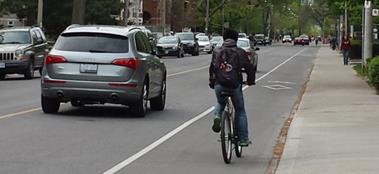
Cycle tracks are separate lanes for bicycles that are adjacent to the roadway, but separated from vehicular traffic. Cycle tracks help distinguish the area for cycling from motor vehicle traffic (more than a painted bicycle lane). The tracks create an environment which is safer for cycling.
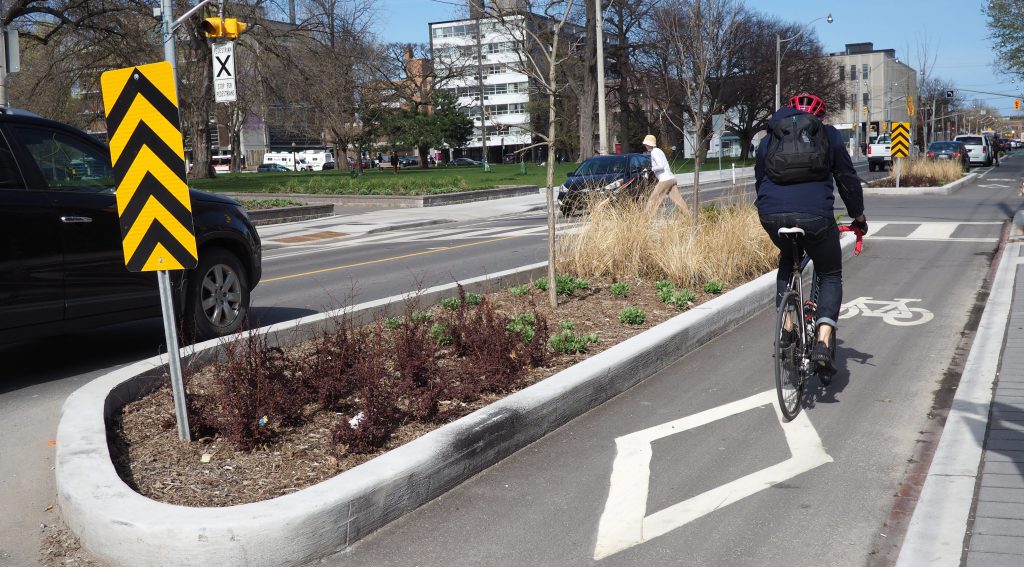
Shared lanes or ‘sharrows’ are road markings used to indicate a shared environment for bicycles and motor vehicles. The shared lane markings highlight cycling routes alerting all road users to the presence of bicycle traffic on the street, and may also be configured to offer directional and wayfinding guidance for people cycling. The shared lane marking is not a dedicated cycling facility, but a pavement marking which has a variety of uses to support a complete bikeway network.
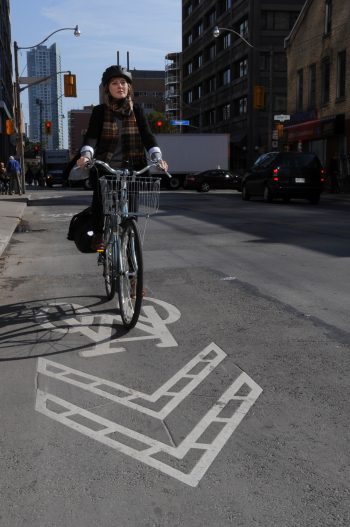
Boulevard trails are two-way paved surfaces that run along a roadway and are designed for pedestrians, people cycling, and other non-motorized users. Trails are at or near sidewalk level, above and away from the curb and roadway. Ideally, separate sidewalks are also present, and if so buffers exist between them.
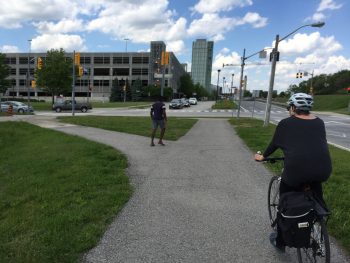
Various types of physical separation in the cycle tracks included concrete barriers (on Evelyn Wiggins Drive and Shoreham Drive) and bioswale (on Murray Ross Parkway, from Evelyn Wiggins Drive to Keele Street).
Half of the project falls under City of Toronto capital funding, and half is contributed by the Federal Government. More information is available on the Federal Government’s website.
Most bike lanes do not affect on-street parking. On some segments, parking studies were conducted and public feedback was sought to determine if parking demand can be met with the inclusion of dedicated bikeways.
No. All new cycling facilities were constructed within the City’s right-of-way.
Yes. The bike lanes will include a maintenance program for snow clearing and street cleaning.
The designs of the bikeways are able to accommodate waste pick-up, emergency services and other municipal services.
City staff developed bike lane design in consultation with TTC staff. City staff continue to work with the TTC to accommodate curb-side bus stops, and consideration for Wheel-Trans passenger boarding.
Visit toronto.ca/cycling to view information about cycling in Toronto including programs to start cycling and safety information.
If you have any questions about the project, please contact cycling@toronto.ca.
Under the Public Transit Infrastructure Fund (PTIF) – Phase 1, the Government of Canada is investing up to $309,500 for the York University and Downsview Cycling Connections Project. The City of Toronto is matching this funding contribution.